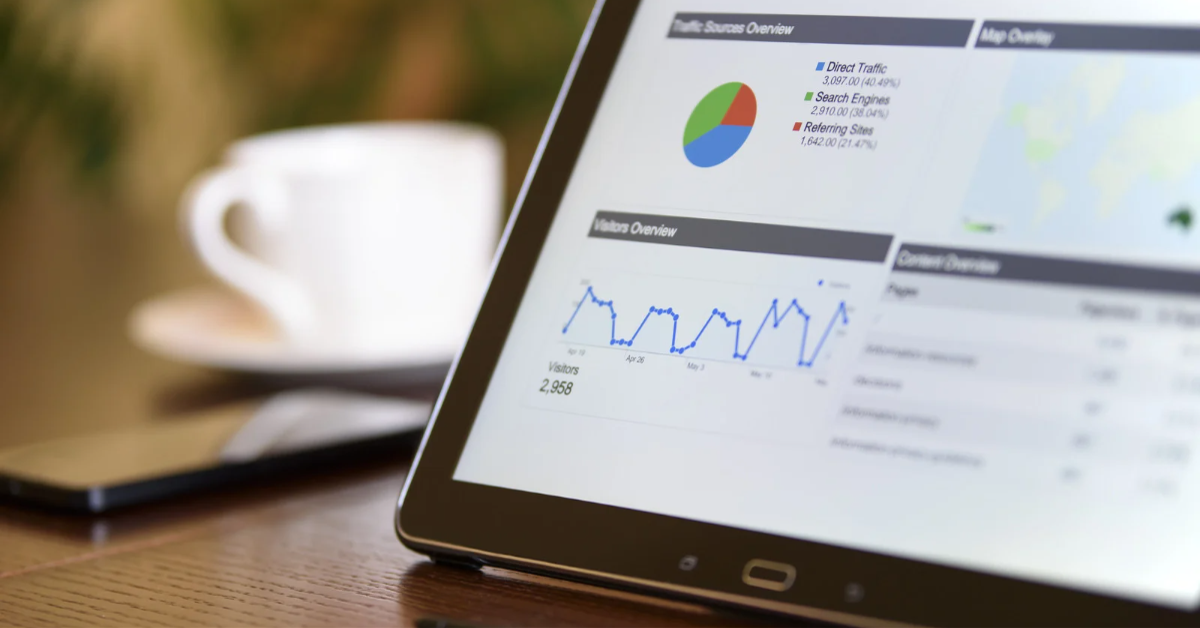
One might think that the traditional marketing mix of product, price, placement, and promotion is all a company needs to succeed. But in the digital age, the reach and speed of the internet and social media have transformed marketing. Now, companies must consider how to integrate digital marketing into their overall marketing mix.
Dr. Dave Chaffey of Smart Insights developed the RACE Planning Framework to help companies develop an omnichannel marketing plan that meets the challenges of reaching and engaging online audiences to prompt co
nversion to online or offline sales. The framework helps companies integrate digital marketing and traditional marketing activities by providing a simple structure for developing a strategic plan.
What does the RACE model stand for?
RACE is an acronym that stands for the four steps in the marketing planning framework: reach, act, convert, and engage.
Reach
The first step is to build awareness and visibility of your brand, products, and services on other websites and in offline media to drive traffic. This can be accomplished through search engine optimisation (SEO), Google Ads, social media marketing, social advertising, and public relations.
Act
The second step is to interact with potential customers who have been reached. This can be done through landing pages, conversion rate optimisation (CRO), forms, product pages, live chat, chatbots, and more.
Convert
The C in the RACE framework stands for convert - converting potential customers into paying customers. This can be done through remarketing, email marketing, marketing automation, and customer relationship management (CRM).
Engage
The fourth and final step is to engage customers in long-term relationships to build customer loyalty. This can be done through marketing automation, reviews, CRO, and CRM.
Customer-centric digital marketing planning
The RACE framework is focused on the customer and creating a marketing plan that will address their wants and needs. You must have a clear understanding of your target audience before you can create an effective marketing strategy. The RACE framework can help you integrate all of your marketing activities into one cohesive plan.
The RACE framework is also very commercial in that it focuses on commercial objectives and provides a marketing plan with key performance indicators (KPIs) to review your results using analytics and summary dashboards (such as those on Google Analytics).
The framework is designed to be practical and action-oriented, and it can be used to manage both online and offline marketing communications to increase sales through digital and traditional channels. The RACE framework brings objectives, channels, and KPIs together such that decision making for your marketing strategy is simpler.
Here are some key points to consider when using the RACE planning framework to develop your marketing strategy.
It all starts with Planning
The RACE digital marketing framework is actually the (P)RACE digital marketing framework, with the P representing the Planning phase. Before you start thinking about your marketing tactics to win the RACE (geddit?), you need to understand your marketing goals, identify your potential customers, and map out the customer journey.
Establishing SMART goals
Start your digital marketing planning by defining your goals and objectives using the SMART objectives framework. Ensure your goals are specific , Measurable, Achievable, Relevant, and Time-bound.
You can also use the 5S objective setting framework to help set better goals for your digital marketing plan.
Defining your target market
To understand your target market, start by conducting some customer analysis. Your target market will differ depending on your business, but you should at least have an idea of who you're trying to reach. Create a buyer persona to help you target your audience more accurately.
You can add a buyer persona to your digital marketing plan by using HubSpot's Make My Persona tool.
Map your current customer journey
Mapping your current customer journey is an important first step in using the RACE Planning Framework. By identifying key touchpoints and discovering gaps in your customer journey, you can begin to develop a more effective strategy for engaging with your customers.
There are a few different ways to map out your customer journey. You can use a customer journey map template, or you can create your own. If you need help figuring out where to start, consider using a customer journey mapping tool like Hotjar or UserTesting.
Once you've mapped out your customer journey, take a close look at each touchpoint and ask yourself how well it meets the needs of your customers. Are there areas where you could improve the customer experience? Are there any steps that are causing friction or confusion?
By taking the time to understand your current customer journey, you'll be in a better position to make changes that will lead to improved customer engagement, conversions and retention.

Executing your Reach plan
Once you've identified your goals and mapped out your customer journey, it's time to develop a Reach plan. The Reach plan will define how you're going to reach your target market, and it will include strategies for online, offline, and viral marketing.
Define your marketing channels
Your online reach plan should start with identifying your website's target audience. You can use Google AdWords to identify keywords that are relevant to your business and target those keywords specifically to your website.
The goal of the Reach phase is to get your brand in front of your target audience. As such, you need to selection channels that lend themselves to reaching new audiences and choose the channels where your buyer personas hang out online.
Your offline reach plan should focus on developing relationships with your target market. This can be done through print and digital advertising, grassroots marketing, and events.
Your viral reach plan should aim to get your brand in front of as many people as possible. This can be done through paid and organic social media campaigns, content marketing, and influencer marketing.
Establish your Reach KPIs
When you are planning your Reach marketing activities , it is important to establish key performance indicators (KPIs) to measure your progress. There are a number of KPIs you can use to measure the reach of your marketing campaigns, including marketing metrics, impressions, and unique visitors.
Some common marketing KPIs that help companies measure the performance of their reach activities include:
-
Number of ad impressions
-
Click-through rate (CTR)
-
Cost per thousands impressions (CPM)
There are a few key things to keep in mind when executing your reach plan:
1. Make sure you have a clear understanding of your target audience. Who are you trying to reach with your message?
2. Develop a mix of paid, owned, and earned media tactics that will reach your target audience. Paid media includes things like advertising, while owned media includes your website and social media pages. Earned media is generated through things like publicity and word-of-mouth.
3. Set traffic driving objectives that are realistic and achievable. This could include things like increasing website traffic by 10% over the course of a month.
4. Monitor your progress and adjust your tactics as needed. Don't be afraid to experiment and try new things.
5. Celebrate your successes!
Executing your Act plan
To encourage your visitors to take action on your site, you need to interact with them in a way that draws them in and makes them want to stay. This can be done through providing quality content, offering valuable resources, or simply by being available to answer any questions they may have. By offering quality content to your visitors, you are more likely to encourage the actions that turn them into leads or customers.
Establish your Act KPIs
As we move through the marketing funnel, our goal is to turn visitors into leads or subscribers. This means we need KPIs that reflect the conversion rate of our website visitors. Common conversion KPIs include:
-
Number of leads
-
Number of subscribers
-
Visitor to lead %
-
Cost per lead
There are a few things to keep in mind when executing your Act plan:
Make sure every page on your website has an appropriate action for the visitor to perform with a clear call-to-action.
Include a clear call-to-action button on every page of your website. This should be in the form of a title or subtitle that summarises what visitors are supposed to do next. Use a button that is both visually appealing and easy to understand.
Use conversion-optimised landing pages for ad campaigns and high-value conversion pages.
Try multiple forms of conversion on your website; embedded forms, pop-up forms, chatbots, live chat
Executing your Convert plan

Revenue is the lifeblood of any business, and online businesses are no different. Without a steady stream of paying customers, your business will quickly dry up and die. That's why it's so important to have a solid plan for converting your website visitors into paying customers.
The approach for generating a sale will vary for different businesses. E-commerce companies focus on generating conversions through their online store whereas B2B companies will look for nurture leads using email marketing and other lead generation methods.
Establish your Convert KPIs
Your conversion KPIs are focused on the establishing the effectiveness and efficiency of your key conversion channels. Whether your convert online offline, it is important to have a good CRM or other method of capturing sales conversion data to ensure full-funnel reporting throughout the whole customer journey.
Here are some examples of Convert KPIs
-
Number of sales
-
Conversion rate
-
Average order value
-
Average customer lifetime value
-
Cost per acquisition
-
Cost per sale
There are a few key things to remember when executing your Convert plan:
1. Understand what your customer wants and needs. What are their pain points? What solutions can you offer?
2. Offer a variety of payment options to make it easy for customers to buy from you.
3. Use high-quality images and videos to showcase your products and services.
4. Make sure your website is mobile-friendly and easy to navigate.
5. Use compelling calls-to-action to encourage visitors to take the next step.
6. Use marketing automation and CRM to capture leads and track conversions.
7. Use data and analytics to track your progress and optimise your campaigns.
8. Celebrate your successes!
Executing your Engage plan
Once you've converted a visitor into a paying customer, your job is far from over. In fact, it's just beginning. The next step is to engage your customers in a long-term relationship to build customer loyalty and grow your customer lifetime value.
Engagement is all about providing value to your customers and fostering a relationship of trust. This can be done through a variety of methods, such as providing quality customer service, sending personalised content, and offering
Establish your Engage KPIs
Develop long-lasting customer relationships that encourages the three Rs of customer delight (referrals, reviews and a repeat purchases) by using the following KPIs:
-
Customer satisfaction rating
-
Net Promoter Score
-
Customer retention rate
-
Customer lifetime value
-
Customer acquisition costs
-
Repeat purchase rate
There are a few key things to remember when executing your Engage plan:
1. Keep your customers happy by providing quality customer service.
2. Send personalised content that is relevant to your customers.
3. Offer incentives to encourage customers to come back.
4. Use marketing automation and CRM to keep track of your customers.
5. Use data and analytics to track your progress and optimise your campaigns.
6. Celebrate your successes!
Integrating the RACE and SOSTAC planning frameworks
RACE and SOSTAC are two popular marketing planning frameworks that can be used together to create a comprehensive marketing plan. Dr Dave Chaffey's RACE planning framework focuses on the four main stages of the customer journey: reach, act, convert, and engage. PR Smith's SOSTAC framework, on the other hand, is a more general framework that can be used for any type of marketing planning. It includes the six steps of situation analysis, objectives, strategy, tactics, action, and control.
Lots of people have questions about how to integrate RACE with SOSTAC, and fortunately Dr Dave Chaffey himself has put together a detailed explanation of how to use RACE and SOSTAC together in the video below.
In conclusion
The RACE Planning Framework is a great tool for developing an effective digital marketing plan. It takes into account the need to create buyer personas, set SMART goals and KPIs, and execute a comprehensive digital marketing strategy. With digital marketing plans that use the RACE Framework, businesses can be sure that they are reaching their target audience, engaging them, and converting them into customers.

Comments